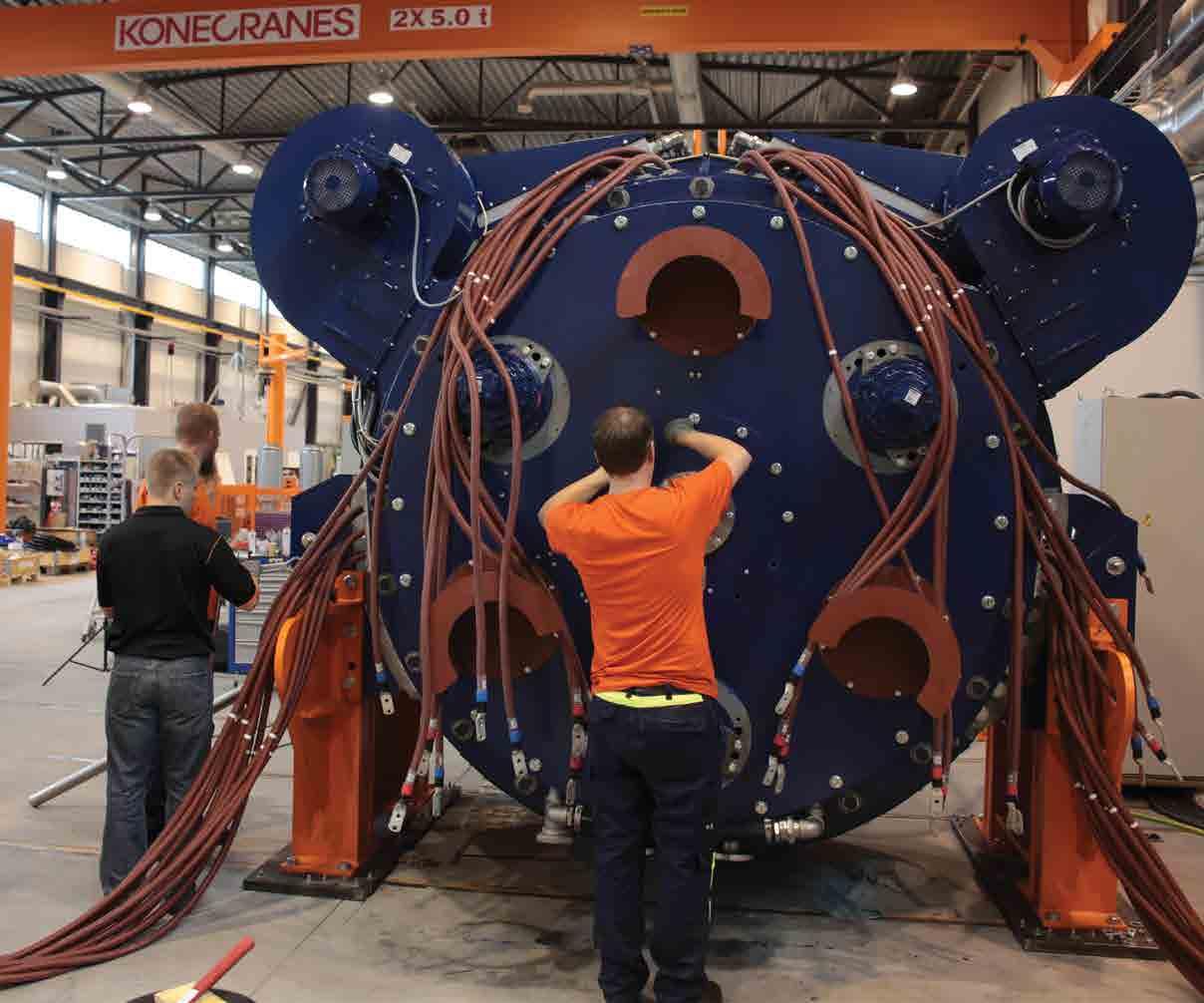
4 minute read
Time to switch The Switch
TIME TO SWITCH
Leading European provider of advanced drive train technology The Switch is now enjoying an increasingly strong global position thanks to a strategic partnership with Japanese company Yaskawa and an ever-more innovative product portfolio. Emma-Jane Batey spoke to CEO Jukka-Pekka Makinen to learn more.




Helsinki-based innovative energy company The Switch is a specialist in advanced drive train technology with a focus on developing, manufacturing and installing megawatt-class permanent magnet machines and power converter packages for wind, marine and special industrial solutions. Established in 2006, The Switch today employs nearly 200 people and posted net sales of €37.1 million in 2014.
In 2014, The Switch became part of the Japanese Yaskawa Electric Corporation, a world-leading provider of core technologies based on motion control, robotics automation and systems engineering. This strategic acquisition has already positively contributed to The Switch’s predicted growth, particularly in Asia. CEO Jukka-Pekka Makinen: “This acquisition has worked out very well for us as our two core business areas synergise perfectly. Yaskawa is especially strong with robots and small drives and of course we are well known for our large drives; it’s a terrific marriage that gives us the full support we need to proceed and execute our business strategy for worldwide growth. A major part of our development strategy is to offer a more comprehensive product portfolio and to expand in South East Asia. Our acquisition by Yaskawa delivers on both these aims.”
Indeed, Yaskawa acquired The Switch to support both companies’ strategy development objectives and to strengthen their international presence, with The Switch playing a key role in Yaskawa’s System Engineering Division and serving as a catalyst for long-term growth. Mr Makinen continued, “As a strong Finnish company, we’ve been able to align ourselves with the strengths of Yaskawa as a Japanese company; they’re especially strong on issues such as


quality management, qualifications and process reviews for example. It’s already proving to offer a great strengthening of our foundations, whilst also giving us the global support to boost our products and our solutions.”
A global family
Founded in 1915, Yaskawa employs over 15,000 people worldwide and reported net sales of €3.2 billion in 2014. Famous for its motor applications, advancement of industrial automation, the creation of mechatronics and cutting-edge robotics, the company is serving as ‘a gateway to Japan’ for The Switch. Mr Makinen said, “Our plans for growth are primarily focused on our domestic Finnish market and across South East Asia. Customers have long been able to buy our generators in Europe and Asia but, with the new opportunities presented by joining Yaskawa, we expect to see an even greater presence and high volume production. We’ve already got full orders for drives, in the tens of millions, so we are in a good position going forward.”
With this potential for global expansion as part of the Yaskawa family, The Switch expects its performance in 2016 and beyond to exceed its previous achievements. The company plans to keep investing in both its facilities and its R&D capabilities, with the vast majority of its products representing long-term opportunities for its customers. Mr Makinen added, “Many of our customers are focused on wind power development and generation, and our products support their on-going aims to maximise the potential of advanced drive



trains in ever growing powers in wind turbines. We are continually working on new models. At the moment, we are producing serial deliveries of components for 8 MW turbines.”
New generation
Mr Makinen also explained how in the marine sector, the shaft generator application represents a strong opportunity for growth. He said, “We’re skilled in making the most of the natural energy available, so, for example, with large ships that have big twostroke engines we can mount a generator which is equipped with our frequency converters on the main shaft. This can then lower the speed of the main engine while still feeding the required 50 Hz into the ship’s network. All of this saves emissions, saves fuel and, because the engine is turning at a lower speed, cheaper fuel can be used too.”
This latest innovation, which has been previously applied via a gearbox but never as a direct shaft generator, shows that The Switch continues to lead the way in the renewables, marine and industrial power generation markets. Mr Makinen concluded, “We’ve taken what we’ve learned in optimising drive trains in the wind turbine market and developed new high-speed motors, for example, that can be utilised in another industry sector to drive pumps and compressors without gearboxes. It’s an exciting time for The Switch and we’re more than ready to exploit the excellent opportunities we’ve got as part of Yaskawa.” n











